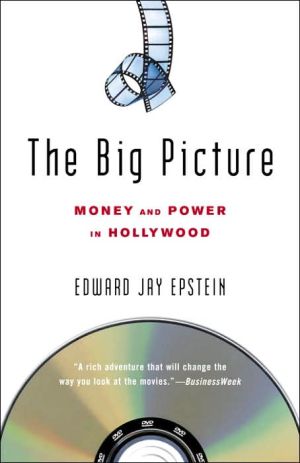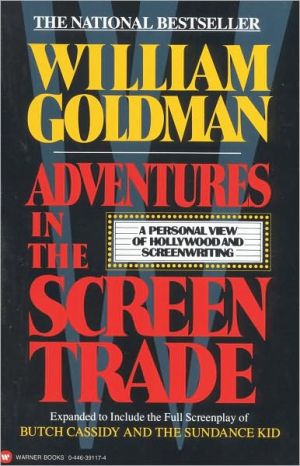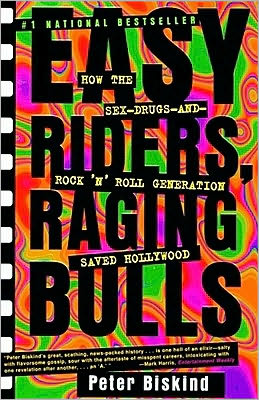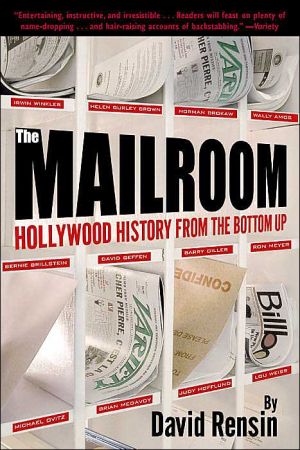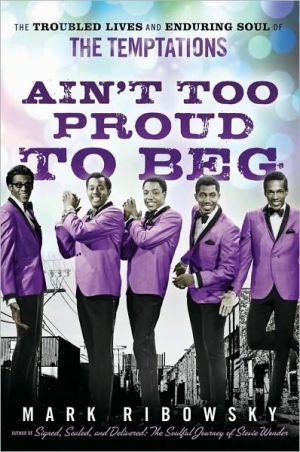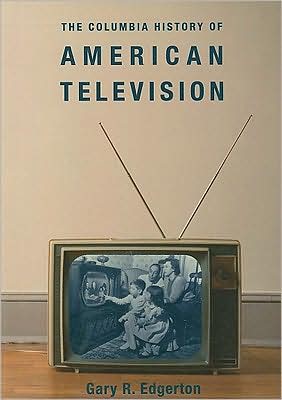The Big Picture: The New Logic of Money and Power in Hollywood
In this unprecedented, all-encompassing, and thoroughly entertaining account of the movie business, acclaimed writer Edward Jay Epstein reveals the real magic behind moviemaking: how the studios make their money.\ Epstein shows that in Hollywood, the only art that matters is the art of the deal: Major films turn huge profits not from the movies themselves but through myriad other enterprises, from video-game spin-offs and soundtracks to fast-food tie-ins, and even theme-park rides. The...
Search in google:
During the heyday of the studio system spanning the 1930s, ‘40s, and ‘50s, virtually all the American motion picture industry’s money, power, and prestige came from a single activity: selling tickets at the box office. Today, the movie business is just a small, highly visible outpost in a media universe controlled by six corporations–Sony, Time Warner, NBC Universal, Viacom, Disney, and NewsCorporation. These conglomerates view films as part of an immense, synergistic, vertically integrated money-making industry. In The Big Picture, acclaimed writer Edward Jay Epstein gives an unprecedented, sweeping, and thoroughly entertaining account of the real magic behind moviemaking: how the studios make their money. Epstein shows how, in Hollywood, the only art that matters is the art of the deal: major films turn huge profits, not from the movies themselves but through myriad other enterprises, such as video-game spin-offs, fast-food tie-ins, soundtracks, and even theme-park rides. The studios may compete with one another for stars, publicity, box-office receipts, and Oscars; their corporate parents, however, make fortunes from cooperation (and collusion) with one another in less glamorous markets, such as cable, home video, and pay-TV. But money is only part of the Hollywood story; the social and political milieus–power, prestige, and status–tell the rest. Alongside remarkable financial revelations, The Big Picture is filled with eye-opening true Hollywood insider stories. We learn how the promise of free cowboy boots for a producer delayed a major movie’s shooting schedule; why stars never perform their ownstunts, despite what the supermarket tabloids claim; how movies intentionally shape political sensibilities, both in America and abroad; and why fifteen-year-olds dictate the kind of low-grade fare that has flooded screens across the country. Epstein also offers incisive profiles of the pioneers, including Louis B. Mayer, who helped build Hollywood, and introduces us to the visionaries–Walt Disney, Akio Morita, Rupert Murdoch, Steve Ross, Sumner Redstone, David Sarnoff–power brokers who, by dint of innovation and deception, created and control the media that mold our lives. If you are interested in Hollywood today and the complex and fascinating way it has evolved in order to survive, you haven’t seen the big picture until you’ve read The Big Picture. The Washington Post - Jonathan Yardley How much longer this will last is in doubt. Epstein worries that "Hollywood's traditional culture will . . . find itself replaced by the computer culture," and he has good reason to. Much evidence suggests that the geeks are taking over. Whatever their considerable skills and expertise, they're technicians, not moviemakers. The respect of the Hollywood community almost certainly means nothing to them, and they almost certainly have little or no interest in serious filmmaking. No one who loves movies can regard the potential implications of this with pleasure.
Chapter 1\ The Two Hollywoods\ The Twilight of the Gods\ On March 20, 1948, the elite of Hollywood, braving freezing temperatures and gale-force winds, filed past the newsreel cameras into the Shrine Auditorium in Los Angeles for the twentieth annual presentation of the Academy Awards. Once inside, they discovered a stage that had been transformed into a towering birthday cake, with twenty giant Oscar statuettes in place of candles.\ The studios had much to celebrate that night. Their movies, the most democratic of all art forms, had become the principal mode of paid entertainment for the vast majority of Americans. In an average week in 1947, 90 million Americans, out of a total population of only 151 million, went to a movie, paying on the average forty cents for a ticket. Nor was this massive outpouring, about two thirds of the ambulatory population, the product of expensive national marketing campaigns. It was simply the result of regular moviegoers going to see whatever was playing at their neighborhood theaters.\ Most of these moviegoers didn’t go to the theater to see a particular film. They went to see a program that included a newsreel; a short comedy film, such as the Three Stooges; a serial, such as Flash Gordon; animated cartoons, such as Bugs Bunny; a B feature, such as a western; and finally, the main attraction. In 1947 in America, movie houses were more ubiquitous than banks. There were more than eighteen thousand neighborhood theaters. Each had only one auditorium, one screen, one speaker (located behind the screen), one projection booth, and one marquee. Every week, usually on Thursday, a UPS truck picked up the previous week’s reels and delivered the new ones. The new film’s title on the marquee and the listings for it in the local newspapers constituted all the advertising most movies got.\ Virtually all of these movies and shorts came from regional exchanges owned and operated by seven distribution companies that were, in turn, owned by seven Hollywood studios: Paramount, Universal, MGM, Twentieth Century–Fox, Warner Bros., Columbia, and RKO. In little over a generation, these studios had perfected a nearly omnipotent mechanism for controlling what the American public saw and heard. It was known, collectively, as the studio system.\ These studios had their common origins in the arcades, nickelodeons, and exhibition halls of the silent-film era. Their founders, self-made and self-educated Jews, had been part of the late-nineteenth- and early-twentieth-century wave of immigration from Eastern Europe. They had worked at menial jobs as ragpickers, furriers, errand boys, butchers, junk peddlers, and salesmen and then gone into the business of showing movies. Here they found an enthusiastic audience, especially among those not yet fully literate in English, and a great deal of competition for it. To rise above their competitors, they instinctively sought what later economists would call “economies of scale.” Louis B. Mayer, the founder of MGM, borrowed money to expand from a single theater in Haverhill, Massachusetts, to a small group of theaters that he combined into a “circuit”—so called because the reels of a single movie could be sent by bicycle from one theater to the next (with showtimes cut so close that sometimes one theater was showing the first reel of a film while another theater was showing the last), allowing multiple screenings of—and multiple admissions for—the movies he rented from film exchanges. As their circuits expanded, these entrepreneurs began opening their own film exchanges and distributing movies to other theater owners, but they still made most of their money from tickets bought at their own box office—so called because the cash went into locked boxes.\ When they found that they could not get enough movies on a regular basis from independent moviemakers, these new distributors took the next step and started making their own films. Initially, their studios were in the East, but as their production expanded after the turn of the century, they came under increased pressure from the Edison Trust, the legal entity formed by Thomas A. Edison to control the basic patents on movie cameras and projectors in America. The Trust filed a constant stream of lawsuits against the nascent film companies, who finally decided to relocate their studios a continent’s width away from the reach of the Trust’s East Coast lawyers. They chose the newly incorporated village of Hollywood, California—a place they could control—for their new home.\ In less than a generation, these entrepreneurs had literally gone from rags (or furs) to riches. By the 1940s, the studio heads were among the highest-paid executives in the world. Having come from poverty, they reveled in this wealth and dubbed themselves moguls—an appellation that, although perhaps not strictly appropriate since it originally referred to absolute Moslem rulers, became part of their identity. Louis B. Mayer, who had scavenged rags as a newly arrived immigrant and at nineteen did not have, as his son-in-law David O. Selznick later put it, “the price of a sandwich,” was in 1947 the highest-paid executive in America, with an annual salary from MGM of $1.8 million.\ The studios produced nearly five hundred films in 1947—features and B movies. While marketing strategies varied slightly from studio to studio, the movie business in 1947 was a relatively simple affair. The studios did not license their films to television or other media or license their characters for toys, games, T-shirts, or other merchandise. Foreign markets provided some revenue, but that income was mostly offset by high taxes—Britain had a 75 percent import tax, for example—and most European and Asian countries had restrictions on currency repatriation. As a result, profits from abroad were almost impossible to retrieve.\ In short, studios looked to a single source for virtually all their money: the American box office. In 1947 the six major studios earned over 95 percent of their revenue from their share of ticket sales (called “rentals,” since it was technically the “rent” theaters paid for films) at North American movie houses. This came to $1.1 billion, which made movies, after grocery stores and automotive sales, America’s third-largest retail business.\ The studios were able to harvest this windfall extremely efficiently because they controlled almost all the movie theaters. MGM, Warner Bros., Paramount, Twentieth Century–Fox, and RKO had their own theater chains, which produced about half of their total revenue, while Columbia and Universal controlled chains of theaters less directly through their distribution arms. Among the theaters under studio control were most of the first-run houses in major cities in the United States and Canada, where films had their premieres. During these first runs, films got their reviews, garnered publicity, and generated the word of mouth that served as the principal form of advertising. Thanks to their direct ownership of the theaters, studios were able to determine where, when, and for how long their films played in their first run. Such engagements could extend for many months while studios prepared the subsequent release to neighborhood theaters. For example, in 1947, Samuel Goldwyn’s The Best Years of Our Lives was still playing at New York’s Astor Theater, owned by MGM through its Loews subsidiary, six months after its premiere.\ In addition, the studios indirectly controlled almost all independently owned theaters, which included most of the neighborhood and second-run movie houses, through ironclad contracts that forced the theater owners to commit to show a given number of films (usually ten) in a so-called block. If they did not accept a block, they got no studio films at all—which meant they did not have the star names to attract an audience. Only a few dozen art theaters that showed foreign films could afford to turn down this “blind-bidding” arrangement.\ Not only were the studios able to control the bookings of their films, but they enjoyed a monopoly on the resulting revenue. Stars, directors, writers, and other talent did not share in it. Neither did producers. In rare cases these participants might receive a share of the eventual profits, but never of the studio’s rentals.\ The studios were further aided by low distribution and marketing costs. Because films opened in only a handful of theaters in major cities before moving on to other regions, the same prints and posters could be used first in the Northeast and later on in the South and West. Distribution costs therefore were low, averaging only about $60,000 a film in 1947. Further, there were no national advertising campaigns, and since theaters paid a good part of local advertising and stars freely supplied the publicity on radio and in newsreels, the advertising budgets averaged less than $30,000 a picture.\ What remained after these distribution and advertising costs were deducted from the rental revenue were the studios’ net receipts. In 1947 these totaled approximately $950 million.\ To ensure a profit, studios obviously had to produce their films for less money than their net receipts totaled. To maximize their economies of scale, each studio had organized what amounted to a film factory, with staff and equipment that could operate around the clock. On their soundstages, shadowless light was cast by vast arrays of arc lamps, artificial weather was whipped up by wind, rain, and snow machines, and seas were created in indoor pools. On their back lots, exotic locales could be replicated and filled with extras dressed from the stocks of costumes and other props stored in their warehouses. For example, in 1947, MGM shot the adventure movie The Three Musketeers, which was set in seventeenth-century France, entirely on its soundstages and back lots.\ The studios’ technological apparatus included synchronous background projection, which allowed them to seamlessly integrate actors in current films with stock footage from their extensive film libraries and with film shot elsewhere by second units. They also had animation cameras to convert miniaturized models, puppets, and other replicas into the illusion of full-scale phenomena. To do all this, a veritable army of electricians, camera operators, seamstresses, makeup artists, set dressers, sound engineers, and other technicians were paid weekly wages. The MGM studio in Culver City, which in 1947 was the largest of the studios, could churn out on its soundstages six different films at the same time. With the aid of these assembly-line facilities, feature films could be shot in less than a month, and some B films were shot in a week.\ Under this factory system, studios were also able to keep a tight rein over their product. Frank Capra wrote in a letter to The New York Times in 1939 that “about six producers today pass on about 90 percent of the scripts and edit about 90 percent of the pictures.” These producers reported to the studio chief, who was directly responsible to the studio’s owners.\ The studios also had locked up all the stars who attracted audiences to movie theaters in a contractual arrangement called the star system. In 1947, 487 actors and actresses—including such marquee names as Bing Crosby, Bob Hope, Betty Grable, Gary Cooper, Ingrid Bergman, Humphrey Bogart, Clark Gable, John Wayne, Alan Ladd, and Gregory Peck—were under such contracts. Since these contracts usually ran seven years, precluded the actors from working elsewhere, and had renewal options, the stars were, for that period at least, essentially the studios’ chattel. They had to play every part and perform every bit of publicity assigned to them. If they balked, they could be suspended without pay, as Lana Turner was in 1947 by MGM when she initially refused a part in The Three Musketeers. With no further recourse and facing the prospect of not being allowed to work at the height of her stardom, she finally acceded to MGM’s casting and played the part.\ In addition, studios could rent stars out to other studios for more than their salaries and pocket the difference. Joan Crawford, under contract to MGM, was loaned to Columbia for They All Kissed the Bride in 1942; and Bette Davis, under contract to Warner Bros., was loaned to RKO for The Little Foxes in 1941.\ The contracts also usually gave the studios control of the stars’ public image to further their publicity campaigns for their movies. This meant, in practice, that studios could script stars’ interviews and dictate their public utterances, photographic poses, and gossip-column items. They could order them to alter their facial appearance, hair color, biographical details, and, as was commonly done, their name. Issur Danielovitch, for example, had his name changed to Kirk Douglas, Marion Morrison to John Wayne, and Emanuel Goldenberg to Edward G. Robinson.\ In return, the studios provided their contract actors with an annual salary, roles in major films, and publicity in the media that they owned or controlled, which included newsreels and fan magazines. Whatever publicity benefits stars enjoyed by being contractually linked to a studio, however, their salaries were relatively low compared with the additional revenue they produced at the box office. In 1947 even highly successful stars, such as Clark Gable, made on average less than $100,000 a film. Until their contracts ran their course, stars could not increase their fees as they became more popular with audiences and more prominent in the entertainment media. The star system, in effect, allowed the studios to brand their products via the personas they had created—for example, a James Cagney gangster film, a Roy Rogers western, a Clark Gable romance—and take the full profits from them.\ By locking in actors’ salaries, Hollywood studios were able to control the cost of manufacturing their products. Indeed, virtually all their films made money. Since the average cost of producing a film in 1947, including all studio overhead, was only $732,000, and the average net receipts for a studio feature amounted to $1.6 million, filmmaking was a lucrative enterprise for studios. Less successful films might eke out a profit of only a few thousand dollars, but the hits that appealed to a broad adult audience, like The Best Years of Our Lives, made profits in excess of $5 million.\ But the studio moguls wanted more from their invention than mere profits. Not entirely secure with their rapid ascent to wealth, they also wanted the kind of respect, admiration, and status that would reinforce their position. This social part of the equation had been formally recognized some twenty years earlier, in 1927, at a dinner at the Ambassador Hotel, when Louis Mayer had proposed to thirty-five other top studio executives that they institute a way to honor Hollywood’s (i.e., their own) achievements. The result was the establishment of the Academy of Motion Pictures Arts and Sciences and its annual ritual of bestowing honors in the form of Academy Awards.\ From the Hardcover edition.
Pt. 1The new systemPt. 2The art of deception, the deception of artPt. 3The creation of audiencesPt. 4The economic logic of HollywoodPt. 5The social logic of HollywoodPt. 6The political logic of HollywoodEpilogue : the once and future Hollywood
\ Jonathan YardleyHow much longer this will last is in doubt. Epstein worries that "Hollywood's traditional culture will . . . find itself replaced by the computer culture," and he has good reason to. Much evidence suggests that the geeks are taking over. Whatever their considerable skills and expertise, they're technicians, not moviemakers. The respect of the Hollywood community almost certainly means nothing to them, and they almost certainly have little or no interest in serious filmmaking. No one who loves movies can regard the potential implications of this with pleasure.\ — The Washington Post\ \ \ \ \ Publishers WeeklyTo appear in 2003's Terminator 3, Arnold Schwarzenegger received a fixed fee of $29.25 million, a package of perks totaling $1.5 million and a guaranteed 20% of gross receipts from all sources of revenue worldwide. With that, writes Epstein (Inquest: The Warren Commission and the Establishment of Truth), no matter the film's box office results, "the star was assured of making more money than the studio itself." Such is the "new logic" Epstein explores in this engrossing book. Gone are the days of studio chiefs dominating their stars with punitive contracts and controlling product from script to big screen. Writers now sell their work to the highest bidder, stars have become one-person corporations who "rent" their services to individual productions, and the studios have morphed into what Epstein labels "clearing houses." These multinational corporations exist, in Epstein's description, to collect revenue from an ever-growing variety of sources-home video, overseas markets and product licensing, to name a few-and then disburse it to a fortunate minority at the top of Hollywood's food chain. Epstein explains the structure, personalities and behind-the-scenes interconnection of the "sexopoly" (the six huge media companies that control motion picture entertainment). In vivid detail, he describes the current process of how a film is made, from the initial pitch to last-minute digital editing. There's a refreshing absence of moral grandstanding in Epstein's work. With no apparent ax to grind, he simply and comprehensively presents the industry as it is: the nuts and bolts, the perks and pitfalls and the staggering fortunes that some in the business walk away with. This is the new indispensable text for anyone interested in how Hollywood works. Photos. Agent, Janklow & Nesbit. (On sale Feb. 15) Copyright 2004 Reed Business Information.\ \ \ Library JournalIncreasingly, creativity in Hollywood refers less to the quality of the films produced than to devising new ways of making a buck. Under the old studio system, this was probably true as well, but those moguls paid at least minimal lip service to movies as "art." Now the six major studios are merely part of much larger corporations, and the bottom line is all important. Epstein, author of numerous books on how big business works, turns his investigative eye to the film industry, trying to make sense of where all that big money goes. In so doing, he renders a most insightful, readable account of all aspects of filmmaking, beginning with the "concept," the wooing of high-priced stars whose names alone are supposed to sell a picture, publicity, target audiences, deals with movie theaters, and post-theatrical sales to the video and DVD markets. As does Dade Hayes and Jonathan Bing's recent Open Wide: How Hollywood Box Office Became a National Obsession, this takes a scathing look at what the American film industry has become-largely a play-it-safe, profit-driven business that increasingly panders to ever more jaded audiences. Recommended for all libraries.-Roy Liebman, formerly with California State Univ., Los Angeles Copyright 2005 Reed Business Information.\ \ \ \ \ Kirkus ReviewsA solid analysis of the movie business that shows why today's movies are so bad and why Hollywood is-literally-becoming a land of make-believe. How did Hollywood get from Gentleman's Agreement, a trenchant, well-acted, well-written, well-directed film for adults, to The Lord of the Rings: The Return of the King, a largely computer-generated fantasy for children? Both films copped the Oscar for best picture, in 1948 and 2004, respectively, and in the intervening years, Epstein (Dossier, 1996, etc.) finds much disconcerting information about the making of movies today. Culling myriad sources in an impressive feat of reporting, Epstein first explains the machinations of Hollywood up to 1948. The scenario is familiar: Major studios made films and sent them to their theater chains; audiences filed in, and, often as not, the films showed profits. Anti-trust legislation, the end of block-booking, and the rise of television ended that successful system in the late '40s. Business conglomerates and new moguls moved in, their formula largely derived from Disney: When Mickey Mouse and his ilk (i.e., characters that appealed to pre-teens) fail to pull in crowds, you make up the deficit with movie tie-ins-toys, T-shirts, video games, CDs, DVDs. Sell a filmic assemblage of car chases and fight scenes light on dialogue to airplanes, cable companies, and overseas markets. Get the star on magazine covers and TV talk shows, which are often owned by the film studios' parent companies. And if Cruise, Pitt, or Kidman get difficult, create characters, entire scenes, even entire films by computer. These largely inhuman product packages make billions-and films like Gentleman's Agreement are gone with the wind. Acompelling take that depressingly suggests movies fit more and more into a bigger picture: the age of unreality.\ \
